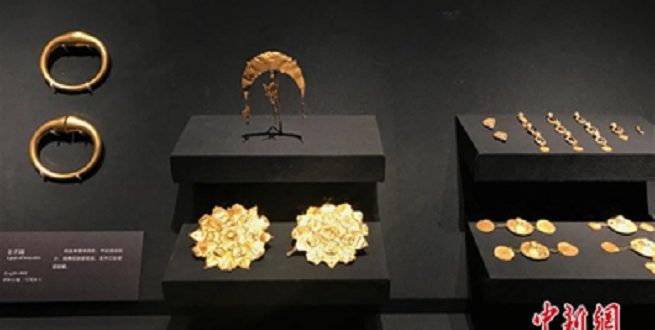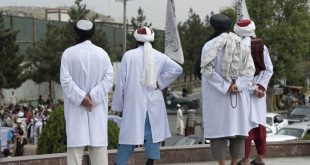AT Monitoring Desk
KABUL: The exhibitions of Afghan artifacts and relics in China clearly demonstrated the good neighborhood and friendship between the two countries, Chief Curator of Afghan National Museum Ainuddin Sedaqat has said.
According to Xinhua, the exhibitions of Afghan artifacts and relics in China clearly demonstrated the good neighborhood and friendship between the two countries, Chief Curator of Afghan National Museum Ainuddin Sedaqat has said.
“Since March 2017, 231 pieces of our artifacts reflecting a range of civilizations including Greek-Bactrian (250 BC-125 BC) and Kushan dynasty (30 AD-375 AD) are in display in different cities of the People’s Republic of China and we the Afghans are thankful to the Chinese government and its people for the cooperation,” Sedaqat told Xinhua in an interview recently.
The official described the ongoing exhibitions in Chinese cities as a sign of “Sino-Afghan friendship,” noting that the Afghan artifacts after arriving in China were put on display in the historic Palace Museum in mid March.
Sedaqat, who accompanied the artifacts to Beijing, told Xinhua that more than 8,000 tourists including Chinese and foreigners visited the Afghan relics in Palace Museum each day to get knowledge on Afghan history and its civilization.
“Afghan land was peaceful in the past centuries. It was cradle of civilizations and our artifacts are the proof to the fact,” said Sedaqat. He said the war and chaotic situation in Afghanistan today has been imposed on Afghans who are peace-loving and diligent people.
The curator said there are many objects among Afghan relics that mirror the Sino-Afghan good neighborhood and cordial relations in ancient times including the Silk Road era.
The artifacts named Bakhtar treasure, which represent civilizations ranging from Bronze Age to Kushan dynasty and Hellenistic period (323 BC-31 BC), had earlier been put on display in over a dozen countries and regions including Germany, Italy, France, the Netherlands, Canada, the United States, Japan, South Korea and Britain, according to the official.
Since March 2017, the treasures have been displayed in several Chinese cities including Beijing and Dunhuang and soon will be displayed in Nanjing, said Sedaqat.
Sedaqat also expressed his satisfaction with the current condition of the Afghan National Museum, saying the entity has been repaired and renovated as many of the smuggled items have been returned from some countries. On average more than 200 people tour the museum daily, which is home to more than 60,000 relics, Sedaqat said.
According to the official, the museum was badly damaged and looted during the bloody factional conflicts in the 1990s in Kabul and adjoining provinces.
The Taliban outfit also vandalized the artifacts in Kabul and other provinces including the giant Buddha in Bamiyan during its reign that collapsed in 2001.
However, the chief curator is hopeful that the museum will soon retain its prestigious position in the region.
 Afghanistan Times
Afghanistan Times




